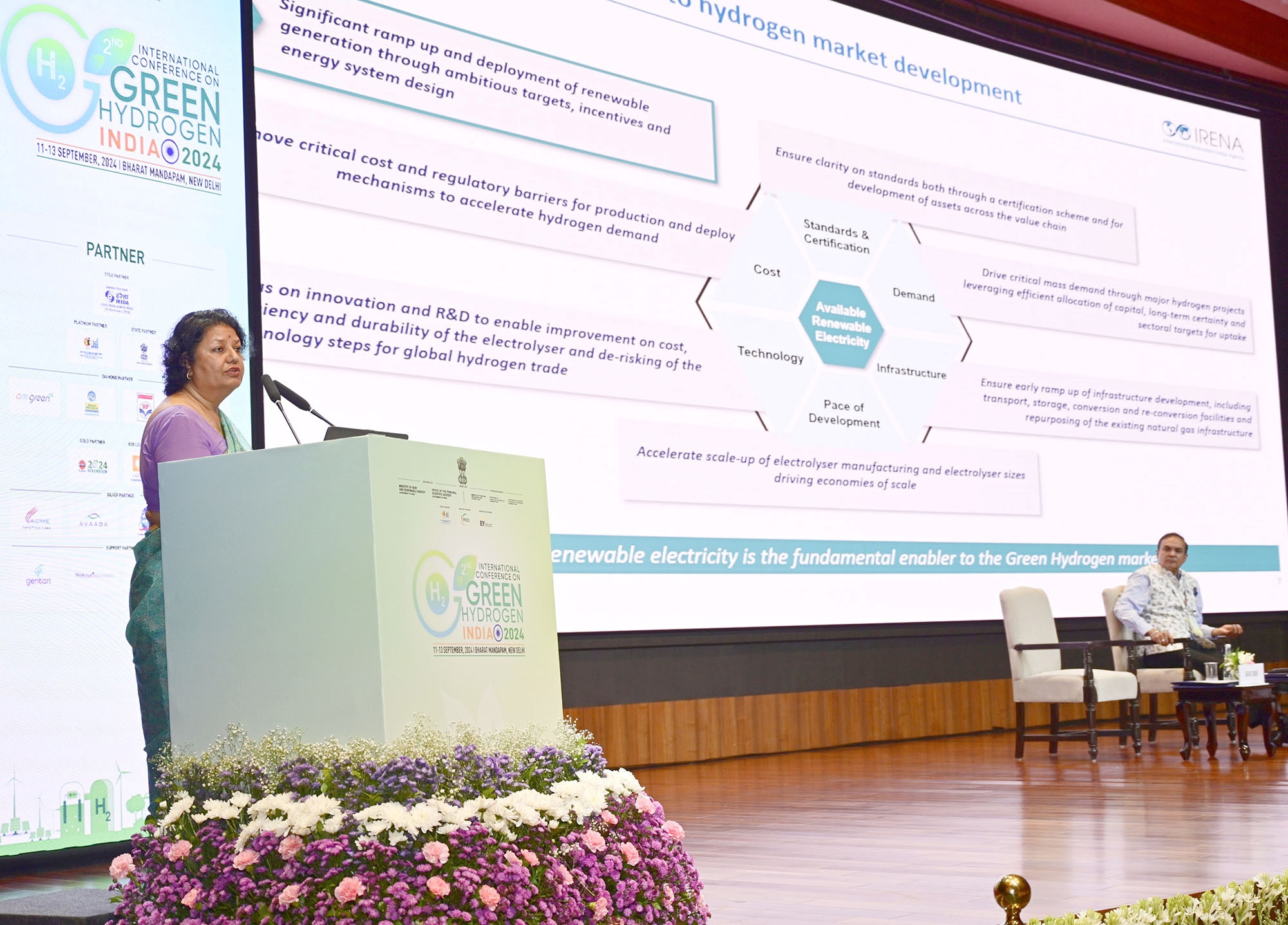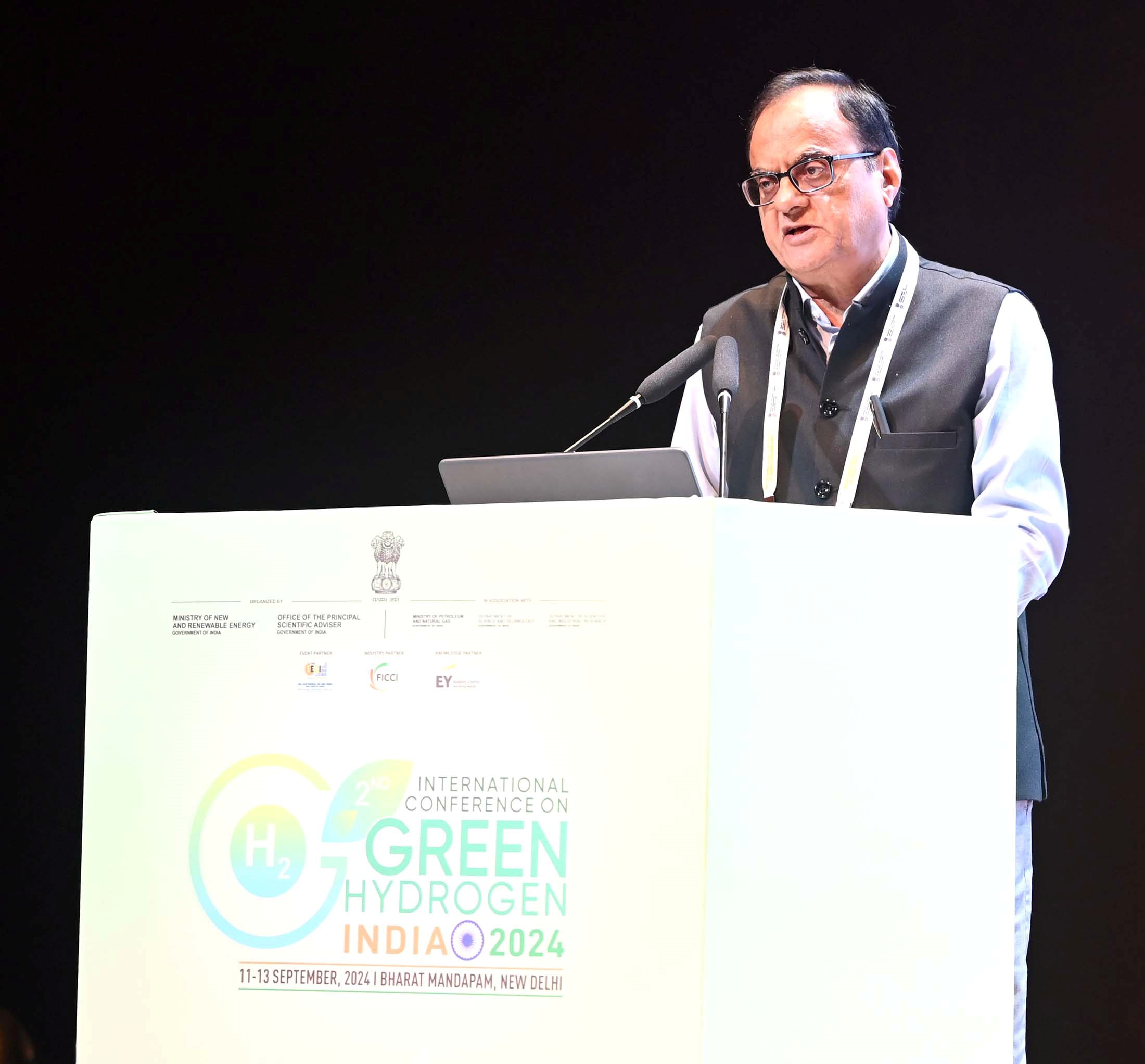As the world faces mounting challenges from climate change, energy security concerns, and rising pollution levels, the need for a cleaner, more sustainable fuel source has never been more urgent. In this context, green hydrogen—a fuel produced using renewable energy sources—is emerging as a key player in the global shift towards sustainable energy.
India, with its growing energy demands and commitment to reduce greenhouse gas emissions, has identified green hydrogen as a potential game-changer. With the ability to decarbonise sectors that are difficult to electrify, green hydrogen holds the promise of transforming India's energy landscape, improving air quality, reducing import dependence, and helping achieve the nation's climate goals.
Hydrogen, the most abundant element in the universe, has long been recognised for its potential as an energy carrier. However, not all hydrogen is produced in an environmentally friendly way. Hydrogen can be classified based on its production process viz. Grey Hydrogen, Blue Hydrogen, and Green Hydrogen.
While Grey Hydrogen and Blue Hydrogen are produced from fossil fuels releasing carbon dioxide as a byproduct and involves carbon capture and storage technologies to reduce emissions respectively, Green Hydrogen is produced through electrolysis of water using renewable electricity (from solar or wind), releasing only oxygen as a byproduct, and making it a completely carbon-free fuel. Needless to mention that the green hydrogen, therefore, represents a clean, sustainable form of energy that has the potential to significantly reduce emissions and support the global transition away from fossil fuels.

India's energy needs are growing rapidly owing to several commercial and domestic reasons. Currently, the country is heavily dependent on coal and imported oil, both of which are major sources of heavy greenhouse gas emissions. The national imperatives such as reduction in carbon emissions, ensuring energy security, economic growth, job creations, and improving air qualities etc. underline the importance of a green hydrogen push in India.
India is the world’s third-largest emitter of carbon dioxide, after China and the United States. Nonetheless, it has committed to ambitious climate targets, including achieving net-zero emissions by 2070 and reducing its emissions intensity by 45% from 2005 levels by 2030. By investing in green hydrogen, India can significantly decarbonise its energy mix, particularly in hard-to-abate sectors such as metal, cement, heavy engineering, and heavy transportation.
It is noteworthy that India imports around 85% of its crude oil requirements, making it vulnerable to global oil price fluctuations and frequent supply disruptions owing to geopolitical crisis. With the transition to green hydrogen, India can reduce its dependence on imported oil and gas, enhancing its energy security and fostering a more self-reliant energy landscape.
A shift towards green hydrogen production and infrastructure development can stimulate economic growth and create new employment opportunities. The green hydrogen industry encompasses a wide range of activities, including the manufacturing of electrolyzers, development of renewable energy sources, and transportation and storage solutions.
By investing in this sector, India has the potential to become a global leader in green hydrogen, creating high-quality jobs and boosting GDP growth. Besides, air pollution is a significant public health crisis in India, with major cities frequently recording hazardous levels of air pollutants. Transitioning to green hydrogen can reduce the need for fossil fuels in sectors like transportation and industrial processes, thereby helping to lower pollutant emissions and improve air quality, which in turn will improve public health outcomes and reduce healthcare costs.

While the potential benefits of green hydrogen are clear, several challenges viz. high production costs, infrastructure needs, limited domestic manufacturing of electrolyzers, energy needs etc. must be addressed adequately to make it a viable energy solution in India. Green hydrogen is currently more expensive than grey and blue hydrogen due to the high cost of electrolyzers and renewable electricity.
Achieving cost-competitiveness with fossil fuels will require significant technological advancements, scaling up production, and policy support to drive down costs. Its production, storage, and transportation infrastructure are still in its infancy in India. The country lacks the necessary pipelines, fuelling stations, and storage facilities, making the large-scale adoption of green hydrogen challenging.
Substantial investment in infrastructure is needed to support the entire green hydrogen value chain. Electrolysers are essential for green hydrogen production, yet India currently relies on imports for most of its electrolyser needs. Developing domestic manufacturing capabilities for electrolysers will be crucial for scaling up green hydrogen production and reducing costs. In addition to it, the production of green hydrogen requires a significant amount of renewable energy. To meet both its growing electricity needs and green hydrogen production targets, India must rapidly expand its renewable energy capacity. Ensuring an adequate supply of clean electricity to produce green hydrogen at scale would indeed be a critical challenge.

Recognising the importance of green hydrogen, the Indian government launched the National Hydrogen Mission in 2021 with the goal of making India a global hub for green hydrogen production and exports. This mission aims to scale up green hydrogen production, reduce costs, and promote research & development in hydrogen technologies.
Besides, the government has outlined several policy incentives to attract investments in the green hydrogen sector, including tax breaks, subsidies, and funding support for research and development. Incentives for setting up renewable energy plants for hydrogen production are also being considered to reduce production costs.
The government has also proposed the introduction of Green Hydrogen Purchase Obligations, which would require specific industries like fertilizer and refineries to purchase a certain percentage of their hydrogen from green sources. This move is expected to create a stable demand for green hydrogen and encourage investment in its production in times to come.
Additionally, India has partnered with countries such as Japan, Germany, and Australia to share technology and expertise in hydrogen production, storage, and utilisation. These collaborations aim to fast-track the adoption of green hydrogen technologies in India and establish the nation as a key player in the global green hydrogen market. Hence, the push for green hydrogen is indeed the need of the hour for India.
With its potential to decarbonise high-emission sectors, reduce dependency on fossil fuel imports, and foster economic growth, green hydrogen can be a cornerstone of India's energy transition. However, realising this potential will require a sustained and collaborative effort, with investments in infrastructure, research & development, technology, and policy support. By positioning itself as a leader in green hydrogen, India can build a cleaner, more resilient, and self-sufficient energy future, while also contributing to global climate goals and setting an example for other nations to follow.

(Disclaimer: The opinions expressed in this article are those of the writer. The facts and opinions expressed here do not reflect the views of ETV Bharat)



